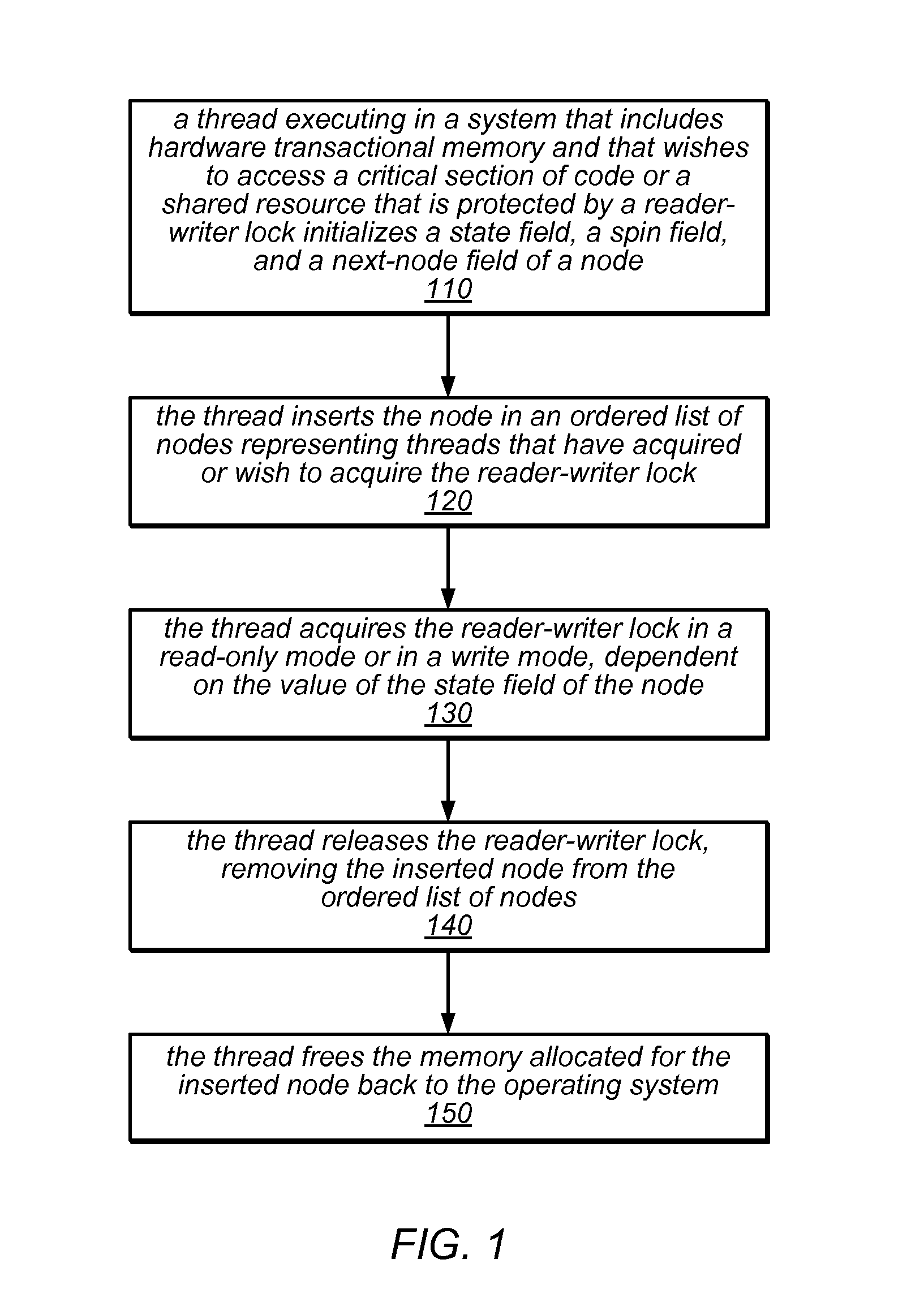System and method for implementing reader-writer locks using hardware transactional memory
a technology of hardware transactional memory and reader-writer locks, applied in the field of reader-writer locks, can solve problems such as arbitrary behavior
- Summary
- Abstract
- Description
- Claims
- Application Information
AI Technical Summary
Benefits of technology
Problems solved by technology
Method used
Image
Examples
Embodiment Construction
[0026]The systems and methods described herein may be used to implement reader-writer locks that take advantage of available hardware transactional memory (HTM). For example, the methods used to acquire and / or release one of these reader-writer locks may update various fields of the nodes that collectively represent the lock using a hardware transaction or may update other shared variables associated with the lock (e.g., a tail pointer) using a hardware transaction. These HTM-based reader-writer locks and the methods used to acquire and release them may be significantly simpler to implement than those of previous reader-writer lock algorithms, and may eliminate usage constraints and reduce space requirements when compared to previous reader-writer locks and corresponding methods. In some embodiments, the performance of the HTM-based reader-writer lock algorithms described herein may be competitive with existing algorithms under typical conditions. In other embodiments, one or more o...
PUM
 Login to View More
Login to View More Abstract
Description
Claims
Application Information
 Login to View More
Login to View More - R&D
- Intellectual Property
- Life Sciences
- Materials
- Tech Scout
- Unparalleled Data Quality
- Higher Quality Content
- 60% Fewer Hallucinations
Browse by: Latest US Patents, China's latest patents, Technical Efficacy Thesaurus, Application Domain, Technology Topic, Popular Technical Reports.
© 2025 PatSnap. All rights reserved.Legal|Privacy policy|Modern Slavery Act Transparency Statement|Sitemap|About US| Contact US: help@patsnap.com



